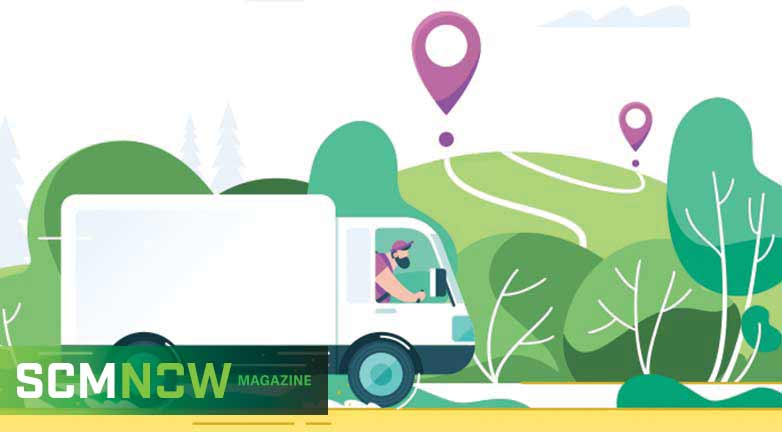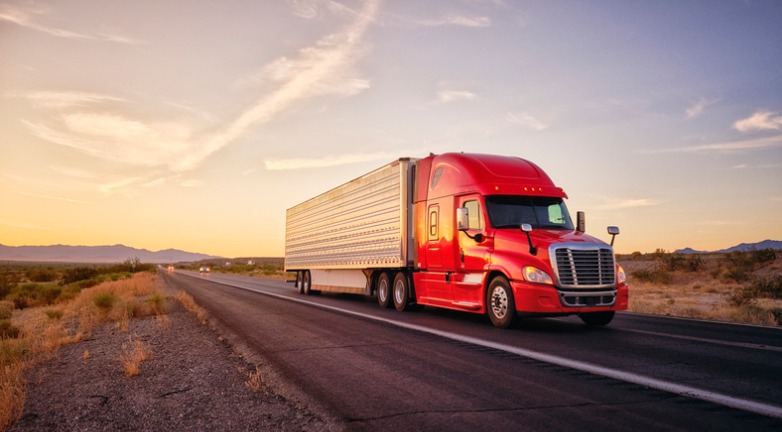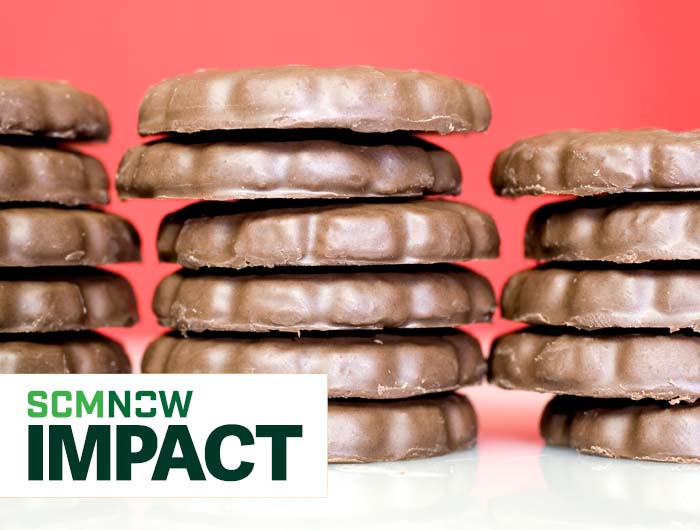As the world grappled with a pandemic this year, many consumers shifted to ordering more products and meals online to comply with social distancing and stay-at-home guidelines. As a result, businesses faced a huge spike in e-commerce sales and last-mile delivery demand.
This has accelerated the e-commerce trend industries already were seeing. Last year, Logistics Management reported that online orders, which only made up about 10% of total global purchases, were growing rapidly, requiring faster click-to-order processing times, constant communication with the customers and faster deliveries (Ous 2019). There likely will be more than 250 million e-commerce users by 2021 (Raju 2019).
As convenient as this service is for consumers, there are several components of last-mile delivery that create environmental inefficiencies. As pressure to reduce supply chains’ impact on the environment increases, last-mile delivery growth could result in more emissions and waste from
- more delivery trucks on the road and thus more traffic
- the use of environmentally inefficient self-owned vehicles by gig workers making deliveries
- more packaging, including boxes, bags and envelopes; protective stuffing, such as packing peanuts or inflated bubble plastic inserts; and take-out food containers and utensils
- product damage.
Shortening the Last Mile
One of the primary ways suppliers are working to reduce adverse environmental effects is to decrease the distance between the nearest distribution center and the consumer. In the past, large distribution centers measuring 1 million square feet or larger were built in more remote areas where land was inexpensive and access by rail or trucks was convenient. These large centers also were efficient and relatively inexpensive to operate. On the negative side, they were farther away from consumers. Today, micro-fulfillment centers as small as 10,000 square feet are being built closer to consumers.
In some cases, especially with grocery companies, retail stores are being used as fulfillment centers. A personal shopper employed by the store or a third party can pick the ordered items from store shelves and pack them for in-store or curbside pickup or home delivery. These services have become even more popular as a result of the pandemic because they enable shoppers to avoid entering a store and coming in contact with more people. Consequently, stores that did not have curbside pickup service already in place have had to quickly adapt (Hensel 2020).
There are a couple of downsides to this strategy, though. Personal shoppers can interfere with other customers shopping in the store, such as by blocking aisles with large carts used for picking orders. Some companies are experimenting with a dark store concept in which no customers are allowed in the store, and employees can pick orders for customers (Meyersohn 2019).
Secondly, although curbside pickup reduces the number of deliveries the store’s distributors would have to make, the customer still has to make a trip to the store to pick up the order. However, if the customer plans the pickup stop as part of a longer trip to make several different stops, the journey can be more eco-friendly.
Greener Travel
In addition to working to shorten the last mile, companies are experimenting with more environmentally friendly vehicles to make the journey. Amazon, FedEx, UPS and others are exploring electric vehicles (EVs), for example. Although these vehicles produce fewer emissions, they do require a lot of electric energy to power them. If that energy comes from fossil fuels, the net environmental gain is reduced (Laughlin 2019). EVs also require batteries. Lithium ion batteries are the popular choice right now, but they tend to be expensive and are susceptible to fires (Dawson 2019). Extensive work still is required to improve batteries.
In theory, electric and hybrid vehicles chart a clear path to lower emissions. Even when the costs of making the batteries and generating the electricity that feeds them is taken into account, most estimates suggest that these vehicles emit roughly half as much greenhouse gases as a gasoline car (Sindreu 2019).
Other fuel-efficient delivery vehicles also are being considered, such as sidewalk robots that are designed to travel slowly for increased safety. Slower speeds give the robots more time to process information and give teleoperators a chance to intervene, if needed. This is especially important because sidewalk environments are different than street environments, as fewer rules govern the paths of pedestrian travel and how to enter and exit the walkways. As a result, special traffic spaces may need to be allocated on sidewalks in order for these robots to be useful. In addition, their productivity is limited by their small carrying capacity.
Drones were being used to deliver lifesaving medical supplies to remote areas as early as 2016 (Jackson 2019). They can fly at a speed of 80 miles per hour and carry 1.75 kilograms of cargo. Zipline, the company managing the service, has reduced the time from receipt of order to launch of a drone from 10 minutes to 60 seconds.
These nontraditional delivery services are likely to find applications. However, they probably won’t have widespread use anytime soon. Many up-and-coming delivery techniques — including autonomous vehicles — will require years of testing before they can be fully rolled out for use.
One lower-tech option is crowdsourced delivery services, which could be particularly suitable for e-commerce. The idea is that a neighbor could pick up another person’s package while they are traveling anyway and deliver the package to the customer. Although this method could offer some benefits in terms of reduced pollution and congestion by replacing dedicated freight trips, the impacts of crowdshipping are unclear and depend on several factors, such as the transport mode used, the match between supply and demand, the length of detours, and possible induced demand (Simoni et al. 2019).
Optimized Routes
All of the major carriers optimize the routes their delivery vehicles travel during a normal day. As last-mile deliveries increase, routes will need to be more variable, and delivery companies will need to employ route optimization technology to avoid unnecessary travel.
For example, UPS’s On-Road Integrated Optimization and Navigation (ORION) program’s algorithm includes the commitment times for package deliveries and customer pickup times, and routing is created as the packages load (Kaplan 2019). “We’re saving on average six to eight miles per driver per day,” a UPS spokesperson said in a statement. That eliminates 100 million miles driven each year, saving 10 million gallons of fuel. ORION was fully deployed by fall 2016 and saves $400 million per year in gas and labor. UPS will begin testing the next generation of ORION this year. The current version is static, setting a route before the driver begins delivery. The updated program will dynamically change the route navigation, optimizing it throughout the day based on real-time information about traffic congestion, road conditions and requests for new package pickups.
This strategy goes hand in hand with efforts to reduce the number of deliveries overall. For example, if retailers extend their delivery time frames from the now-expected one-hour or two-day windows into a week-long time frame, the delivery company can better prepare for deliveries and optimize loads and routes. Another option could be to encourage consumers to make fewer large orders instead of many small, frequent ones.
Reducing Packaging Waste
Packaging is a bit of a mixed bag when it comes to e-commerce and omnichannel deliveries. Packaging tends to be fundamental for protecting products during shipment, which in turn reduces product waste. However, there often is more product waste because more packaging is needed in general. For example, multiple similar items can be shipped to a store in the same box, or the items may arrive wrapped to a pallet. Instead, items that are shipped directly to a consumer’s home require their own boxes or bags. Although companies are making strides in using recycled and recyclable materials in this secondary packaging, if consumers do not know how to recycle the packaging or do not make the effort to recycle it, there will be even more waste.
To minimize packaging waste, retailers are starting to skip the secondary packaging for items that already come in a box. Product manufacturers are assisting with this effort. Procter & Gamble’s (P&G’s) Eco-Box packaging innovation supports a ships-inown-container delivery model. “Eco-Box products arrive on the consumer’s doorstep as a sealed, shipping-safe, corrugated box — with no wasteful outer boxing or padding needed,” Pat Reynolds (2020) writes for Packaging World. The new Tide Eco-Box, for example, contains less packaging, 60% less plastic and 30% less water than the current 150-ounce Tide press-tap package. It also is lighter because of its ultra-compacted formula and takes up less space because of its boxed design, which means more containers can fit on fewer delivery trucks. “We know that the ‘last mile’ remains the biggest challenge both economically and ecologically in e-commerce,” said Isaac Helleman, brand manager for e-commerce innovation in P&G’s Fabric Care group, in a statement. “The Tide Eco-Box is designed to keep the convenience of online shopping for the consumer but reduce the overall impact of that convenience on our environment.”
The (Triple) Bottom Line
Last-mile delivery has become an essential retail offering. Speed, accuracy and reliability can make or break the customer experience. However, waste in its many forms can create serious ecological challenges. As last-mile deliveries continue to increase in number and scope, companies will have to figure out how to use the above-listed technologies and strategies as well as emerging ideas for the benefit of people, planet and profit.
Refernces
1. Dawson, Chester. 2019. “Burn Notice.” Bloomberg Businessweek, April
2. Hensel, Anna. 2020. “As retailers reopen, curbside pickup experience will be the key to success.” Modern Retail, May 12. https://www.modernretail.co/retailers/ as-retailers-re-open-curbside-pickupexperience-will-be-the-key-to-success/
3. Jackson, Tom. 2019. “Forget Pie in the Sky, Drones are Saving Lives.” Fortune India.
4. Kaplan, Deborah Abrams. 2019. “UPS and Amazon: A tale of 2 last-mile sustainability strategies.” Supply Chain Dive, January 15.
5. Laughlin, Lauren Silva. 2019. “Who Willed the Electric Car? China, and Here’s Why.” The Wall Street Journal, October 11.
6. Meyersohn, Nathaniel. 2019. “Why supermarkets are building ‘dark stores.’” CNN Business, October 31. https://www.cnn.com/2019/10/30/ business/grocery-delivery-pickup-walmartkroger-stop-and-shop/index.html.
7. Ous, K. 2019. “Packaging’s new role in e-fulfillment.” Logistics Management 58, no. 2: 38-42.
8. Raju, Riya. 2019. “How to Tackle Last-Mile Delivery Challenges Using ‘The Best’ Technology.” SupplyChain247, September 1. https://www. supplychain247.com/article/how_to_tackle_ last_mile_delivery_challenges_using_ technology/locus.
9. Reynolds, Pat. 2020. “P&G Greatly Expands Eco-Box Portfolio.” Packaging World, April 22. https://www.packworld.com/issues/article/ 21129929/pg-greatly-expands-ecobox-portfolio.
10. Simoni, Michele D., Edoardo Marcucci, Valerio Gatta, and Christian G. Claudel. 2019. Potential last-mile impacts of crowdshipping services: A simulation-based evaluation.” Transportation. http://dx.doi.org/10.1007/s11116-019-10028-4.
11. Sindreu, Jon. 2019. “In the Green Transition, Transportation Is the Next Big Baddie.” The Wall Street Journal, December 23. https://www.wsj.com/articles/ in-the-green-transition-transportation-is-the-nextbig-baddie-11577119404.



